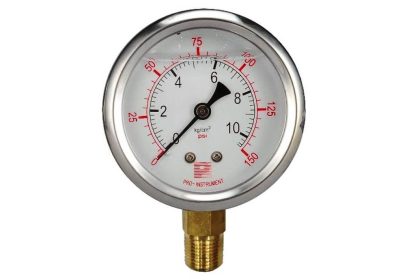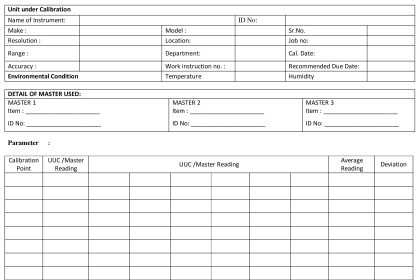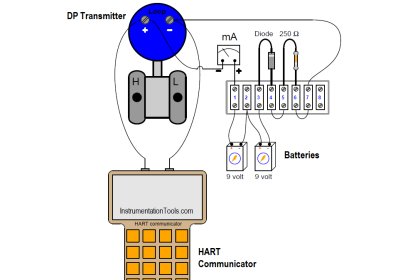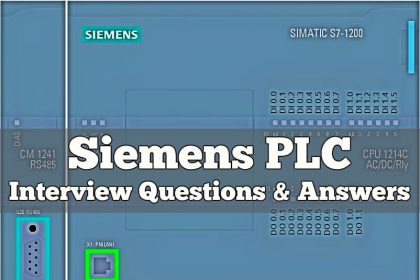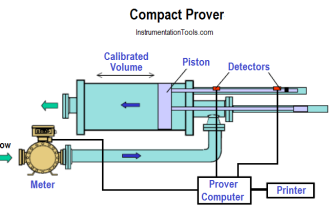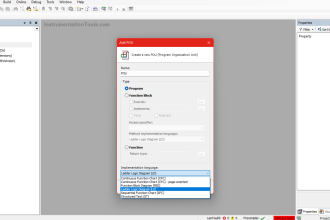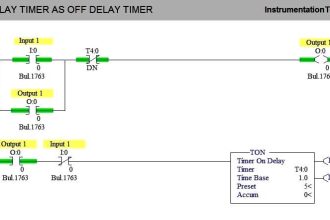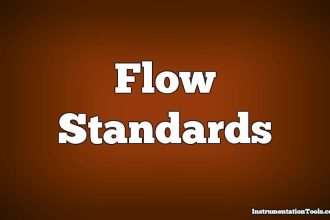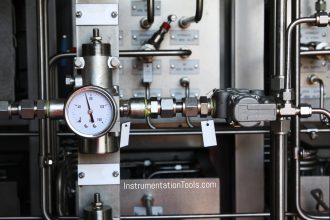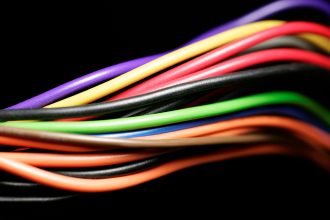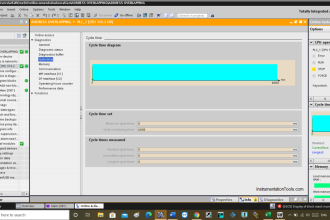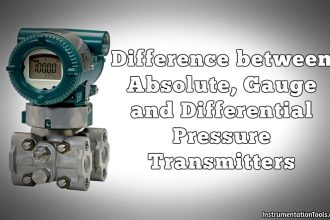Here you find the Top 30 Interview Questions on Pressure Measuring Devices in Pressure Measurement for your exam or job preparation.
Pressure Measuring Devices Questions
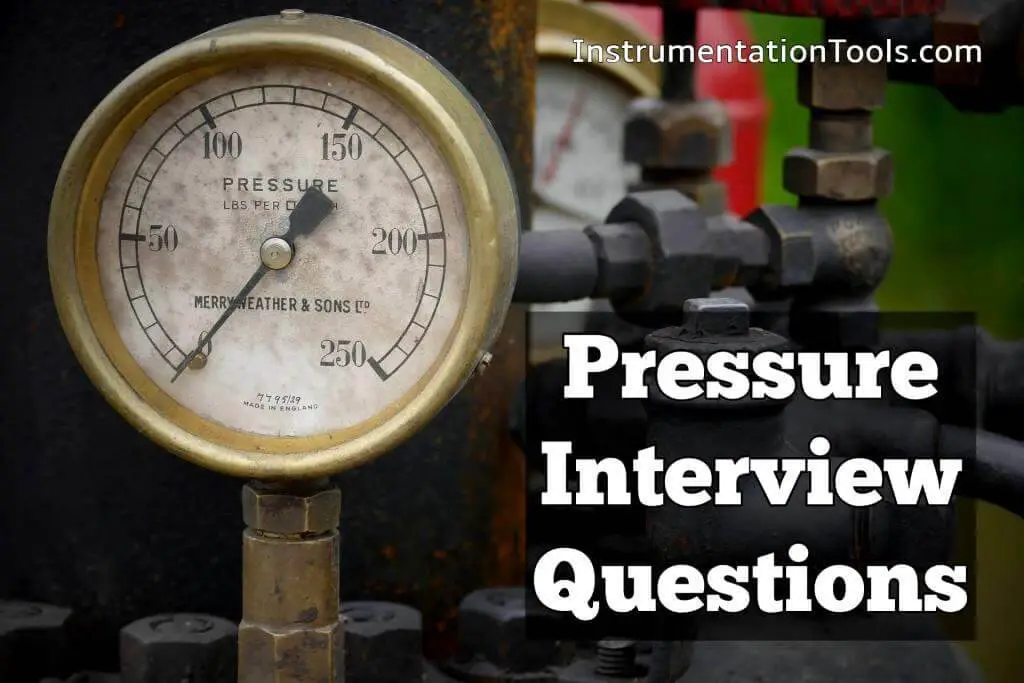
1. Define Absolute pressure
The force exerted by the fluid per unit area of the wall of the container is called the absolute pressure.
2. Define Gauge pressure
It is the difference between the absolute and the local atmospheric pressure.
3. Define vacuum pressure
Vacuum pressure is the amount by which atmospheric pressure exceeds the absolute pressure.
4. Give some units of pressure
- Pascal,
- psi,
- kg/cm2,
- bar etc.
5. What are the types of manometers?
- U – tube manometer
- Well type manometer
- Inclined type manometer
- Ring balance manometer
- Micro manometer
6. State the principle of U- tube manometer
The U-tube manometer is the simplest measuring instrument used for gauge pressure measurement by balancing the pressure against the weight of a column of liquid.
7. What are the types of elastic pressure gauges?
8. Explain the principle of Bourdon tube pressure gauge
Bourdon tube is a device that senses pressure and converts the pressure into displacement. Since the bourdon tube displacement is a function of the applied pressure it may be amplified and indicated by a pointer.
9. What are the advantages and disadvantages of bellows?
Advantages:
- Simple construction
- Moderate price
- useful for measurement of low, medium, high pressures.
- Used to measure absolute, gauge, differential pressures
Disadvantages:
- Not suited for dynamic measurements.
- Errors will occur
10. State the principle of Diaphragms
The pressure to be measured is applied to the diaphragm, causing it to deflect. That deflection is being proportional to the applied pressure.
11. What are the types of diaphragms?
- Flat type
- Corrugated type
12. State the principle of LVDT and STRAIN GAUGE
LVDT:
The differential output voltage of the secondary winding of the LVDT is proportional to the displacement experienced by the mass caused due to acceleration on the Core; the differential output voltage becomes a measure of acceleration.
Strain Gauge:
When the strain gauge is stretched or compressed, its resistance changes on the account of the fact that both length and diameter of the strain gauge changes. This change in resistance will be proportional to the torque in the shaft.
13. State the principle of capacitive pressure transducer
The output of a parallel plate capacitor depends on the gap between its movable and fixed plates. Due to pressure, if the gap between the plates is altered, its capacitance also changes. This change in capacitance becomes a measure of pressure.
14. Write the advantages and disadvantages of capacitive pressure transducer
Advantages:
- Simple construction
- Useful for measurement of low, medium, high pressures.
- Used to measure absolute, gauge, differential pressures
Disadvantages:
- Errors will occur
15. State the principle of piezo-resistive pressure sensor
When a wire is subjected to pressure from all sides its electrical resistance changes. This change in resistance occurs due to the distortion produced in the crystal when subjected to external pressure.
16. What are the applications of piezoresistive pressure sensor?
- Household appliances – washing machine, vacuum cleaner
- Automotive appliances – oil level, gas level
- Biomedical appliances – blood pressure measurement
17. State the principle of Mc leod gauge
Compression of a sample of the low pressure gas to a level which is sufficiently high so that it can be read with the use of a simple manometer.
18. What are the advantages and limitations of Mc leod gauge
Advantages:
- Independent of gas composition
- Linear relationship exists
Disadvantages:
- It should obey boyle‘s law.
- It cannot give a continuous output.
19. State the principle of thermal conductivity gauges
When a conductivity wire gets heated electric current flows through it. The rate at which heat is dissipated from this wire depends on the conductivity of the surrounding media.
20. What are the types of thermal conductivity gauge?
- Pirani gauge
- Thermocouple type conductivity gauge
- Ionization gauge
21. State the principle of hot cathode type ionization gauge
The hot filament of the hot cathode gauge emits electrons into the vacuum, where they collide with gas molecules to create ions. These positively charged ions are accelerated towards a collector where they create a current in a ion gauge detector circuit. The amount of current is proportional to the gas density.
22. Write some application of pressure measurements
- steam boiler
- tanks and container
- manufacturing and chemical industries
23. Define ionization
It is a process of knocking off an electron from an atom and thus producing a free electron and positively charged ion.
24 What is bellows elements
When pressure is applied to the bellow element the bellow element will deflect and a displacement will be produced. That displacement will be proportional to the applied pressure.
25. What are the shapes of bourdon tube available?
1. C – type
2. Spiral type
3. Helical type
26. Explain Bourdon tube and its types
Bourdon tube is used for pressure measurement.
It is divided into 3 types.
- C- type
- Spiral
- Helical
1. C-type
It consists of a oval tube which is made into an arc of 2500. Hence the name C- type. One end of the tube called tip is sealed and it has a link mechanism which moves over a pointer. Other end is attached to a socket where pressure to be measured is applied.
When pressure is applied to bourdon tube, tube will change its position and hence the tip will undergo some displacement and which in turn proportional to pressure applied.
Advantages:
- Low cost
- Simple construction
- Safety
Disadvantages:
- Shocks and vibration will occur
2. Spiral type
It is made by winding several turns of the tube in the form of spiral. One end is connected to a pointer and other is attached to the socket where pressure can be measured is applied. Here there is no need of geared sector and pinion arrangement.
When pressure is applied to bourdon tube, tube will change its position and hence the tip will undergo some displacement and which in turn proportional to pressure applied
3. Helical
It is made by winding several turns of the tube in the form of helical. One end is connected to a pointer and other is attached to the socket where pressure can be measured is applied. Here there is no need of geared sector and pinion arrangement.
When pressure is applied to bourdon tube, tube will change its position and hence the tip will undergo some displacement and which in turn proportional to pressure applied
27. Explain about bellows ?
Bellows is a series of circular parts resembling the folds .These parts are formed or joined in such a manner that they are expanded or contracted axially by changes in pressure. The metals may be thin enough and they are brass, bronze, copper etc.
Normally bellows has the ability to move over a greater distance than required in a pressure application and therefore to give it maximum life and have better accuracy its movement is generally opposed by a calibrated spring so that only a part of the maximum stroke is used. This system is called spring loaded bellows.
Advantages:
- Simple construction
- Moderate price
- Accuracy is 0.5%
Disadvantages:
- Not suited for dynamic measurement
- Longer relative movement
28. Explain about diaphragm ?
Diaphragms are used to measure pressure. The pressure to be measured is applied to the diaphragm, causing it to deflect; the deflection is proportional to the applied pressure. The movement of the diaphragm depends on its thickness and diameter. The diaphragm element is essentially a flexible disc which may be either flat or corrugated type.
Two different arrangement are used for capsular elements, the convex and nested type
Application:
- Used for measuring low pressures
- Accuracy is 0.5%
- Ranges are 0 -50 N/m2 to 0 -200 KN/ m2
29. Explain piezoresistive pressure sensor and capacitive pressure transducer
When a wire is subjected to pressure from all sides its electrical resistance changes. This change in resistance occurs due to the distortion produced in the crystal when subjected to external pressure.
A bone ring of about 1 cm dia and 0.5 cm thickness is wound over a insulated manganin wire. The winding is generally bifilar for avoiding inductive effect.
In most common metal wires, the resistance decreases with increase in pressure. While for antimony, bismuth, lithium resistance increases. For cesium it initially decreases for a small values of pressure changes and reaches a minimum beyond which it increases with increase of pressure.
Application:
- House hold appliances – Washing machines , vacuum cleaner
- Automotive Appliances – Oil level, Gas level
- Biomedical appliances – Blood pressure measurement
30. Explain hot and cold cathode type ionization gauge
Hot cathode ionization gauge:
The hot filament of the hot cathode gauge emits electrons into the vacuum where they collide with gas molecules to create ions. These positively charged ions are accelerated towards a collector where they create a current in a conventional ion gauge detector circuit. The amount of current formed is proportional to the gas density.
The grid is maintained at a large positive potential with respect to the cathode and the plate. The plate is at negative potential. Since the positive ion collector is external to the cathode, this method is known as external ionization gauge.
When a potential difference V is impressed across a column of gas with free electrons in the space, the electrons will acquire a kinetic energy Ve. The positive charge on the grid attracts the electrons away from the cathode. They circulate around the grid passing through the fine structures and collide with the grid. The collector inside the grid is negative charged and attracts these positive charged ions.
It measures the total pressure of all the gases present in the system. The pressure of the gas
P = (1/s) Χ (Ip/Ig)
Where s is the sensitivity of the gauge.
Cold cathode ionization gauge:
In a cold cathode device, electrons are drawn from the electrode surface by a high potential field.
Two sub-types:
- Penning gauge
- Inverted magnetron

